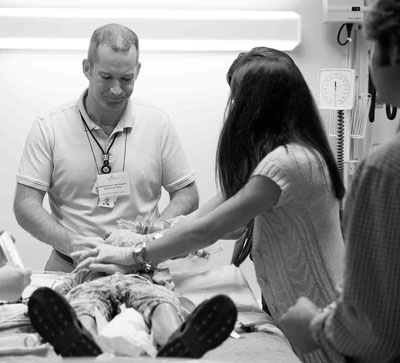Genome Rounds: Working together to discover the unknown

Nicola J. Camp, Ph.D., professor of genetic epidemiology and human genetics, opened a recent Genome Rounds by recounting the genetic rabbit hole she and her interdisciplinary team of researchers had been down for the past six months.
They were analyzing the full genomic sequences of six “relateds” with chronic lymphocytic leukemia (CLL) that belong to a family with a strong history of CLL. It was like looking for a genetic needle in a haystack, but they had identified multiple interesting coding mutations that suggested a very promising pathway.
Camp’s presentation commanded the attention of a room bursting with brainpower. Biomedical informaticians, clinicians, genetic counselors, pathologists, geneticists, department chairs, students, post-docs and a host of others actively participate in the evaluation of research methodology and practices at the monthly meeting. At a certain point, her engaging talk took a slightly different tone. It turned out that because of “white noise” created by subtle annotation mismatches that were misinterpreted by the genetic analyzing software, they had been led down a mistaken path and never arrived in Wonderland. “We have nothing,” she concluded.
And that’s when the room went to work. Sitting in the third row was the creator of one of the world’s most advanced platforms for genetic analysis, Mark Yandell, Ph.D., professor of human genetics and adjunct professor of biomedical informatics. Camp had used his tool called VAAST. While Yandell questioned her inputs, parameters and settings for clearing out the white noise of a full human genome, Camp was able to offer direct feedback to Yandell about the limits of his current algorithm for genomic discovery.
“This kind of process is vital to the success of genomic analysis,” says Yandell. “There are literally 3 billion different possible answers, and no one person can think of every possible scenario. The value of seeing how our tool is being used on the front lines is immeasurable.”
“That’s how research works,” says Camp, ready to start over with a more knowledgeable baseline. “What we’re doing here has never been done before. We’re truly pioneering the tuning process by which we organize and analyze this complex data. There’s no how-to book to traverse the unknown towards novel findings. The best way to do that—the only way to do that—is in teams.”



